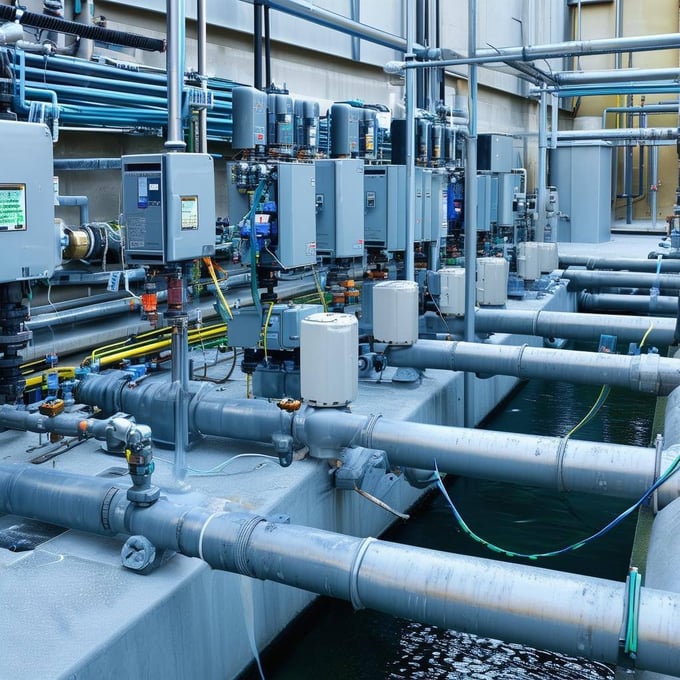
Optimizing Water and Wastewater Operations: The Power of RTU to RTU Control
In the ever-evolving landscape of industrial automation, Remote Terminal Unit (RTU) to RTU control has emerged as a game-changer for water and wastewater operators. This advanced control strategy allows different parts of a system to communicate and react to each other's conditions, leading to more efficient, responsive, and automated management. In this comprehensive guide, we'll explore the various applications and benefits of RTU to RTU control in water and wastewater operations.
Understanding RTU to RTU Control
RTU to RTU control involves direct communication between multiple Remote Terminal Units in a distributed control system. This allows for decentralized decision-making based on real-time data from various parts of the system. Let's dive into some key applications:
1. Pump Control for Elevated Storage Tanks
One of the most common applications of RTU to RTU control is managing pumps that feed elevated storage tanks. Here's how it works:
- An RTU at the storage tank monitors water levels.
- It communicates with an RTU at the pump station.
- Based on predefined setpoints, the tank RTU signals the pump RTU to start or stop pumping.
- This ensures optimal water levels without risking overflow or running dry.
2. Wastewater Lift Station Coordination
In wastewater collection systems, RTU to RTU control enables smart management of multiple lift stations:
- Each lift station has an RTU monitoring wet well levels, pump status, and flow rates.
- Downstream RTUs communicate their capacity and wet well levels to upstream RTUs.
- Upstream stations adjust their pumping operations to prevent overwhelming downstream capacity.
- This coordination prevents sewer overflows, reduces pump wear, and optimizes energy usage.
3. Pressure Management in Water Distribution
Water distribution networks benefit greatly from RTU to RTU control:
- RTUs at critical points monitor pressure levels.
- They communicate with RTUs controlling pressure-reducing valves (PRVs) and booster pumps.
- The system dynamically adjusts to maintain consistent pressure throughout the network.
- This reduces water loss from leaks and prevents damage from excessive pressure.
4. Chemical Dosing Control
RTU to RTU control enables precise management of water treatment processes:
- RTUs monitor water quality parameters like pH and chlorine residual.
- They signal RTUs controlling chemical dosing pumps.
- Treatment levels are adjusted in real-time based on current water conditions.
- This ensures effective treatment while optimizing chemical usage.
5. Combined Sewer Overflow (CSO) Management
In combined sewer systems, RTU to RTU control helps manage overflow events:
- RTUs at various points in the system monitor flow and storage levels.
- They communicate to optimize storage and flow during heavy rainfall.
- This coordinated approach reduces the likelihood and severity of overflow events.
6. Reservoir Release Coordination
For systems with multiple reservoirs, RTU to RTU control enables sophisticated water resource management:
- RTUs at each reservoir monitor water levels, inflow rates, and quality parameters.
- They communicate with each other and with release valve RTUs.
- The system coordinates releases to balance flood control, water supply, and environmental flow requirements.
- This approach allows for adaptive management based on changing conditions across the watershed.
7. Groundwater Well Field Management
RTU to RTU control helps sustainably manage aquifer resources:
- Each well's RTU monitors pumping rates, water levels, and potentially water quality.
- RTUs communicate with each other and a central control RTU.
- The system redistributes pumping loads to prevent excessive drawdown at any single well.
- This approach helps prevent aquifer depletion and optimizes energy usage.
8. Aeration Control in Wastewater Treatment
Biological treatment processes benefit from the fine-tuned control enabled by RTU to RTU systems:
- RTUs with dissolved oxygen (DO) sensors are placed in different aeration basin zones.
- They communicate with RTUs controlling blowers or surface aerators.
- Aeration is dynamically adjusted based on DO levels and ammonia concentrations.
- This optimizes the treatment process, improves effluent quality, and reduces energy consumption.
9. Stormwater Management
Urban drainage systems use RTU to RTU control for flood prevention:
- RTUs at stormwater detention basins communicate with RTUs controlling release valves.
- The system coordinates water retention and release across the urban landscape.
- This helps prevent localized flooding and manages overall system capacity.
10. Water Reuse Systems
RTU to RTU control ensures safe and efficient water reuse:
- RTUs monitor treated effluent quality.
- They signal RTUs controlling distribution pumps for non-potable reuse applications.
- This ensures water quality meets required standards before distribution.
Benefits of RTU to RTU Control
Implementing RTU to RTU control in water and wastewater operations offers numerous advantages:
- Improved system efficiency and performance
- Reduced energy consumption
- Better response to changing environmental conditions or demand patterns
- Enhanced asset management and reduced wear on equipment
- Improved water quality and treatment effectiveness
- Reduced risk of overflows or service interruptions
- More sustainable management of water resources
Conclusion
RTU to RTU control represents a significant advancement in the management of water and wastewater systems. By enabling different parts of the system to communicate and adapt in real-time, operators can achieve unprecedented levels of efficiency, reliability, and environmental stewardship. As we continue to face challenges related to urbanization, climate change, and resource scarcity, the intelligent, coordinated control offered by RTU to RTU systems will play an increasingly crucial role in ensuring sustainable water management for future generations.



